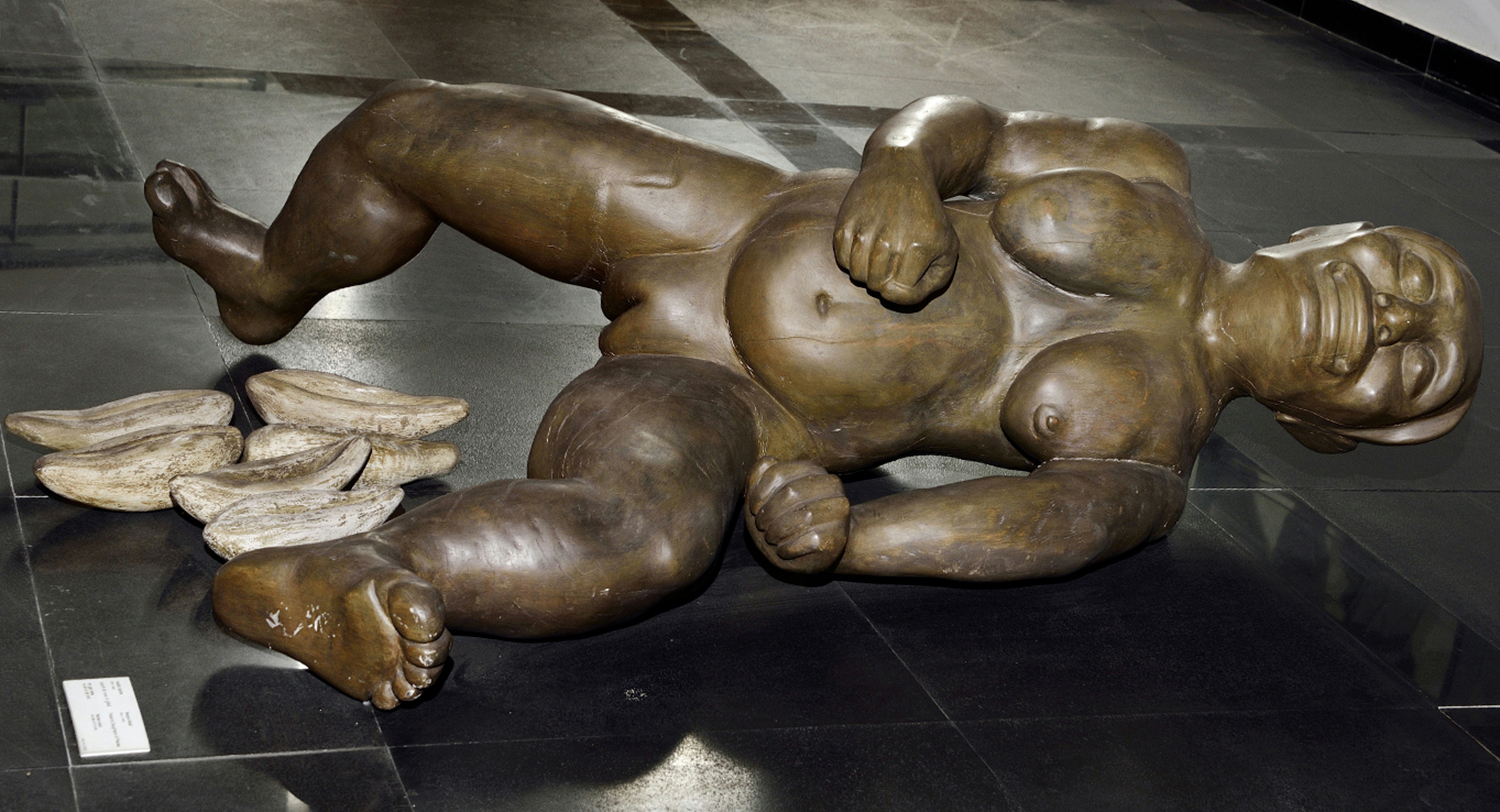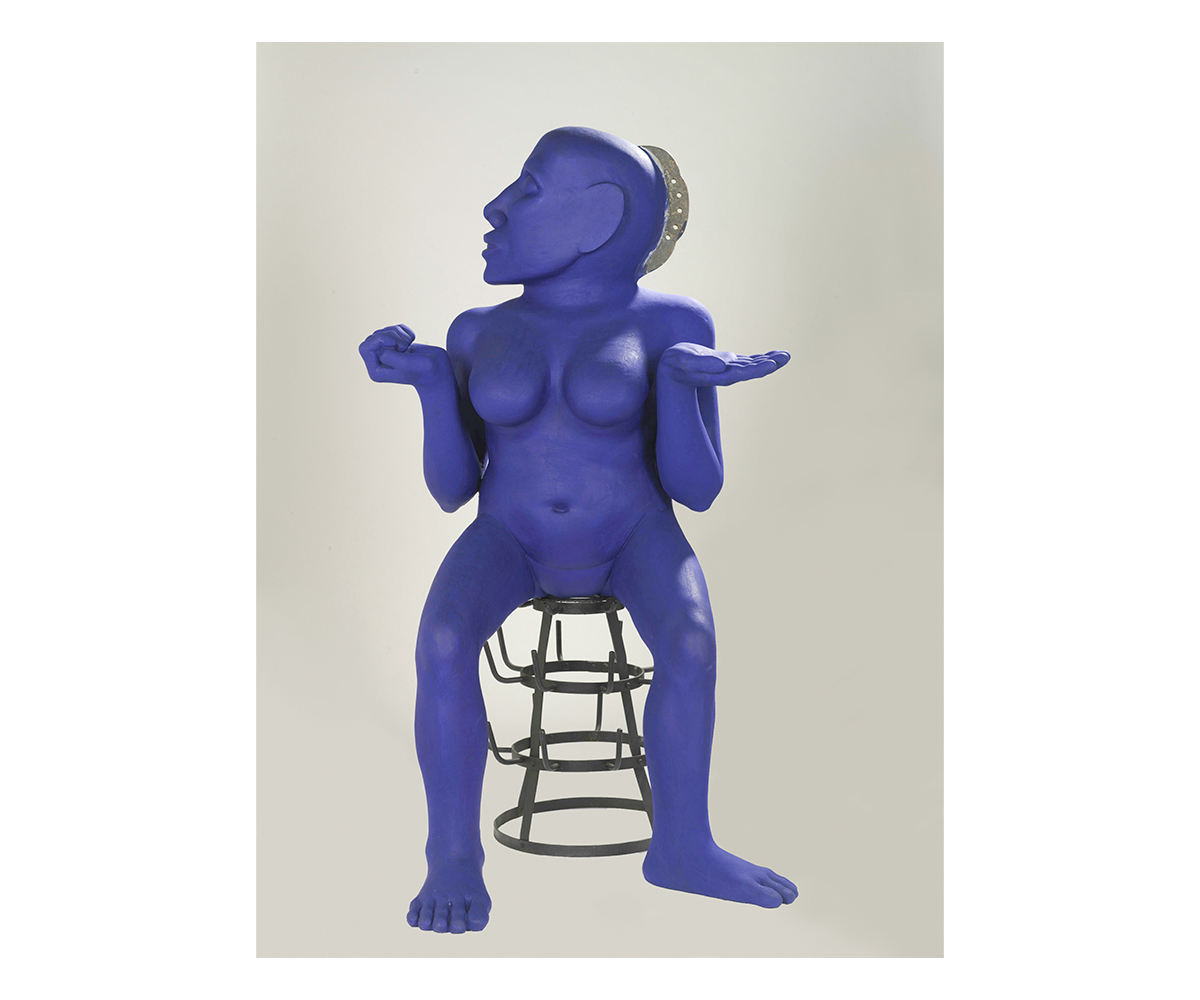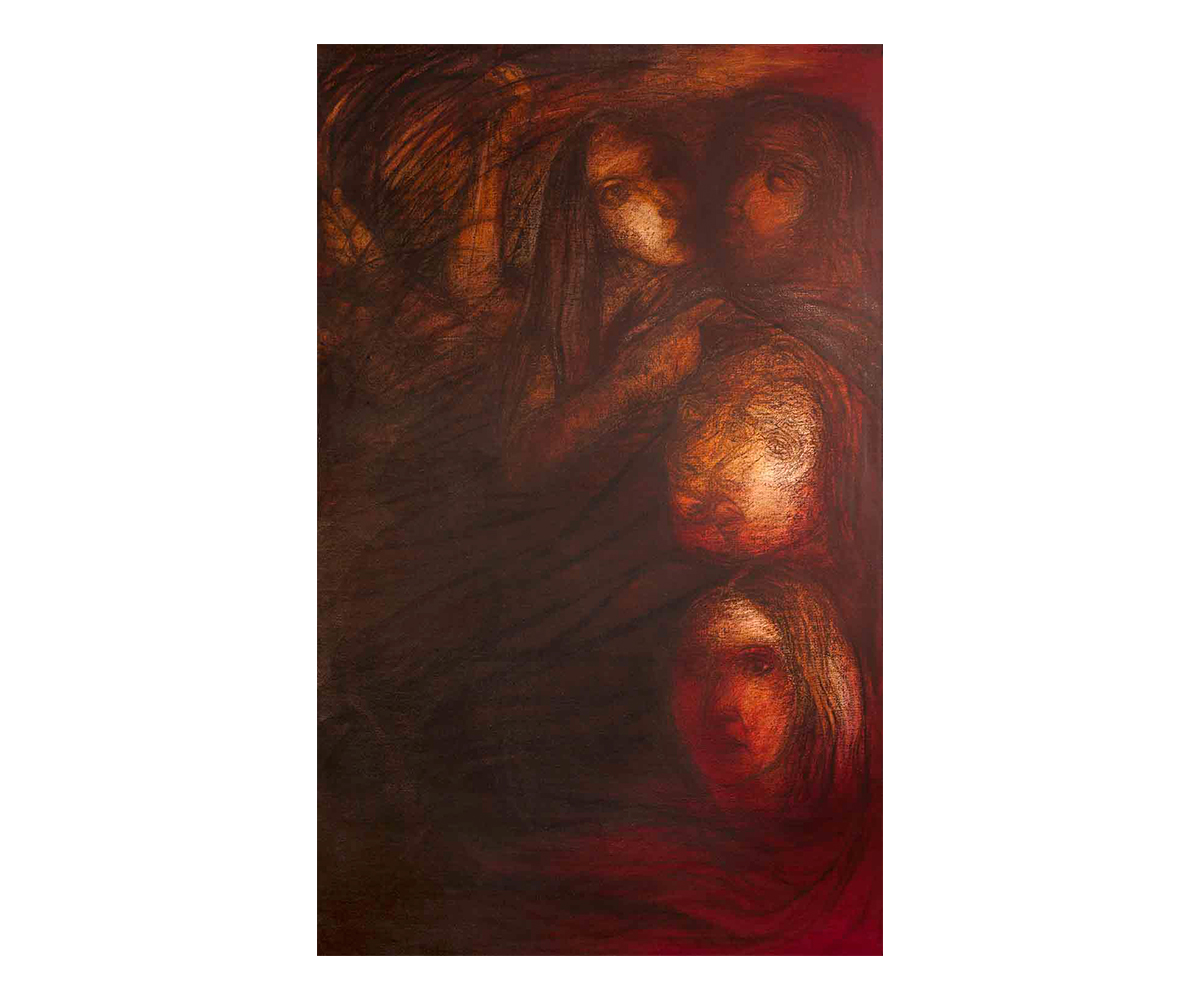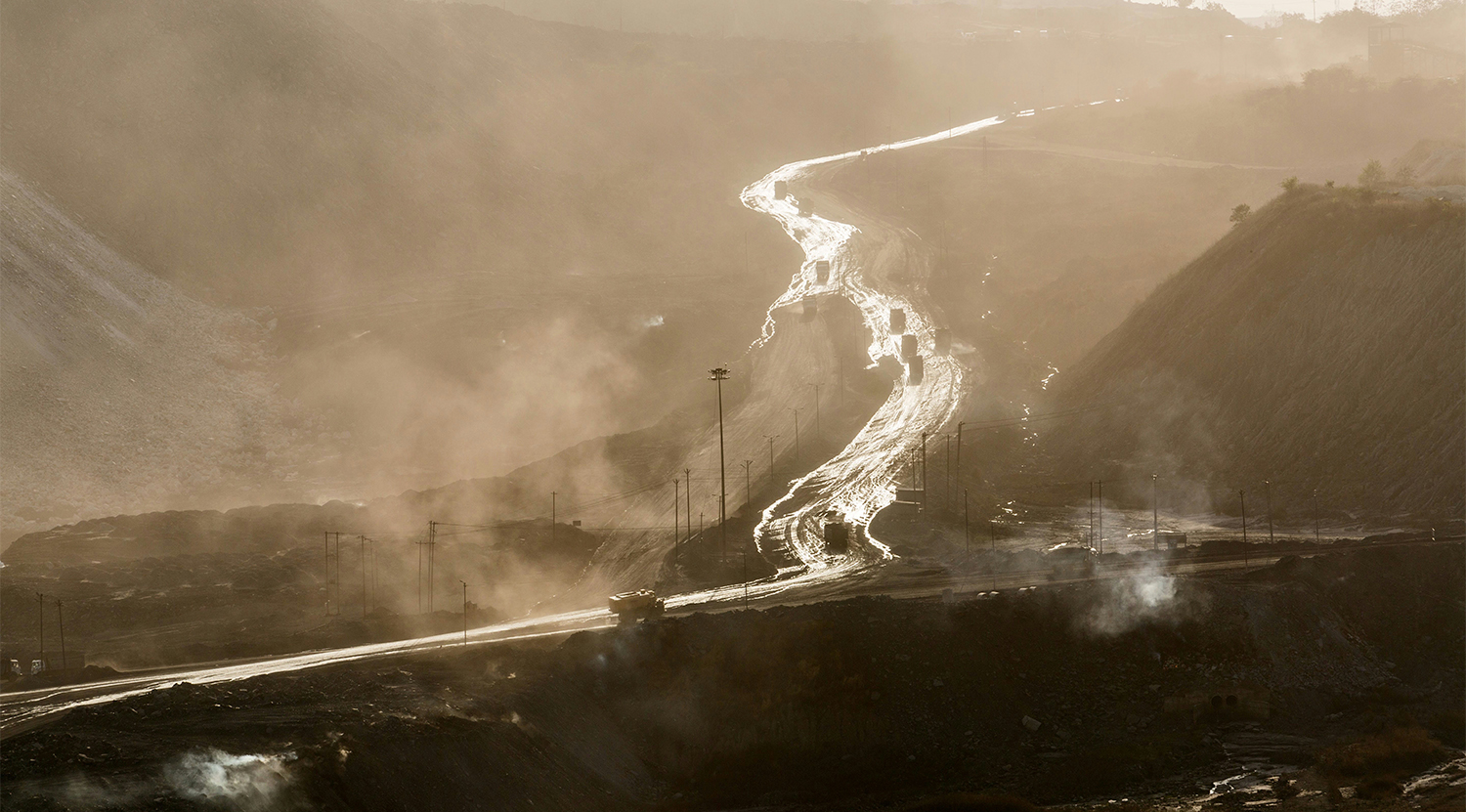ARTICLE
Navjot Altaf
A contemporary Indian artist and activist, Navjot Altaf is known for a multidisciplinary practice that includes painting, sculpture, installation art and video. Her vast body of work elaborates on themes of gender, sexuality and socio-economic injustice in India. Her worldview and her work are informed by both Marxist and feminist critical theory — particularly the work of Arnold Hauser, Ernst Fischer, Simone de Beauvoir and Griselda Pollock — as well as her own grassroots engagement with marginalised communities across caste, class and gender in the country, most prominently in Bastar, Chhattisgarh.
Born in Meerut, Uttar Pradesh in 1949, Navjot (as she is commonly known) moved to Bombay (present-day Mumbai) in the late 1960s to pursue a diploma in fine arts at Sir JJ School of Art. While there, she met the artist Altaf Mohamedi (widely known as simply Altaf), whom she married in 1972. In the early 1970s, Navjot and Altaf joined the Progressive Youth Movement (PROYOM) founded by Dev Nathan and Kiran Kasbekar and affiliated with the Communist Party of India (Marxist-Leninist). One of PROYOM’s aims was to raise awareness about the struggles of marginalised groups in India and around the world. Among their many duties at PROYOM, Navjot and Altaf drafted and displayed political posters around the city. Navjot created several such posters and illustrations for PROYOM’s programmes and agenda, while simultaneously working on her own studio practice.
Cultural theorist and curator Nancy Adajania who has written extensively about her suggests that Navjot experimented with her practice every decade between the 1970s and 2000s, allowing it to evolve according to her expanding ideological outlook. This included changing her medium with each phase, moving from drawing and oil painting to sculpture, and finally to video art. Beginning with oils in the early 1970s, she communicated her Marxist political leanings through her paintings. Her works from this period depict the rising proletariat and critique the power structures prevalent within the political system. The colour red, a marker of Communism, is predominant in her paintings during this phase. Her satirical illustrations for PROYOM from this period use a graphic style, incorporating techniques such as caricatures and a play of scale, to address subjects ranging from poverty-stricken farmers in Maharashtra to the Vietnam War. During the 1980s and 1990s, Navjot also worked on drawings in pen and ink and paintings in watercolour and acrylic.
Navjot’s earliest sculptural works, made in the 1990s and inspired by feminist writers such as Luce Irigaray, Griselda Pollock and Lucy Lippard, are aimed at challenging the restriction of women to reproductive, domestic and sexual duties in patriarchal societies. The painted wooden forms of nude women, drawing on prehistoric and indigenous influences including African art and Mayan mythology, are desexualised and appear simultaneously anonymous and primordial. In 1996, she showcased her first such series, made in collaboration with sculptor A Siddiqui and titled Palani’s Daughters, in the Images Redrawn exhibition held at Gallery 7 and Jehangir Art Gallery in Mumbai, and Shridharani Art Gallery, New Delhi. The show also featured panels of rolled paper featuring photocopied images, serigraphs and scans of text written by women scholars and activists in India.
In 1996–97, Navjot was awarded a grant from the India Foundation for the Arts (IFA) to work on a collaborative project with Adivasi (indigenous) artists in the Bastar district of Chhattisgarh (then part of Madhya Pradesh), including bell metal sculptors Jaidev Baghel, Shantibai and Raituram. Throughout the grant period, the artists worked together in Mumbai and at Shilpi Kendra, an art centre in Kondagaon, Bastar, set up by Baghel. The collaboration, formally called Dialogue Interactive Artists Association (DIAA), marked a turning point in Navjot’s career as she left Mumbai to travel frequently and extensively within Bastar. Over the past few decades Navjot and her colleagues have explored collaborative approaches to various cultural and civil issues within Bastar society, where caste- and gender-based inequality are major issues alongside rampant religious violence and clashes between local communities and the authorities. Working with local artisans and municipality officials, the group has designed and constructed meeting and activity spaces for village youth as part of the Pilla Gudi project, and innovative structures around handpumps in the Nalpar project. Incorporating a variety of forms including local motifs, the brick-and-cement Nalpar structures address prevalent drainage and sanitation issues around the village handpumps, provide platforms to rest pots and create an inviting ambience for people during the chore of fetching water. They have also set up a dialogue centre, allowing people of diverse castes within the society to come together and engage in discussions. All of these initiatives are rooted in ongoing dialogue with the community and the needs and insights that emerge from this, making the Bastar project significant in Navjot’s career as an activist.
Since 2000, Navjot’s work has focused more frequently on the impacts of individual and collective human action, particularly as manifested in climate change and urbanisation. In a major recent exhibition, How Perfect Perfection Can Be (2015) at Chemould Prescott Road, Mumbai, Navjot presents a series of photorealistic watercolours based on her own photographs of skyscraper facades and industrial structures in New York, overlaid with climate-related graphs on transparent acrylic sheets. This return to painting is accompanied by a variety of other works in the same show, independent but mutually juxtaposed so as to highlight Navjot’s environmental and social concerns. Pattern (2015–16), a fragile installation of unmilled rice grains arranged on the floor in a pattern based on indigenous weaving processes, is placed close by, intentionally prone to being disturbed by viewers as they approach the series of paintings. The show also includes two videos. Tana (2015) depicts a weaver setting up the warp threads on a loom to an audio track of the sound of a falling tree, in a continuation of Navjot’s engagement with Bastar and disappearing craft practices. Navjot alludes to ecological fragility in Karvi (2015), a video of the eponymous flower from the Western Ghats that blooms every eight years, a phenomenon known for its dramatic visual and auditory effects in the landscape as the buds pop open.
Navjot’s retrospective, ‘The Earth’s Heart, Torn Out’/Navjot Altaf: A Life in Art (2018), was curated by Nancy Adajania and held at the National Gallery of Modern Art (NGMA), Mumbai, in collaboration with The Guild, Mumbai. The exhibition showcases a large range of Navjot’s artworks, including installations, videos and other collaborative projects, created throughout her five-decade-long career. The artist has exhibited widely within India and internationally, in solo as well as group exhibitions. Her works are held in private and public collections such as NGMA, New Delhi and Mumbai; Kiran Nadar Museum of Art (KNMA), New Delhi; Fukuoka Asian Art Museum, Japan; and the Museum of Art & Photography (MAP), Bengaluru.
At the time of writing, Navjot works out of Mumbai and Bastar.
Bibliography
Our website is currently undergoing maintenance and re-design, due to which we have had to take down some of our bibliographies. While these will be re-published shortly, you can request references for specific articles by writing to hellomapacademy@map-india.org.










